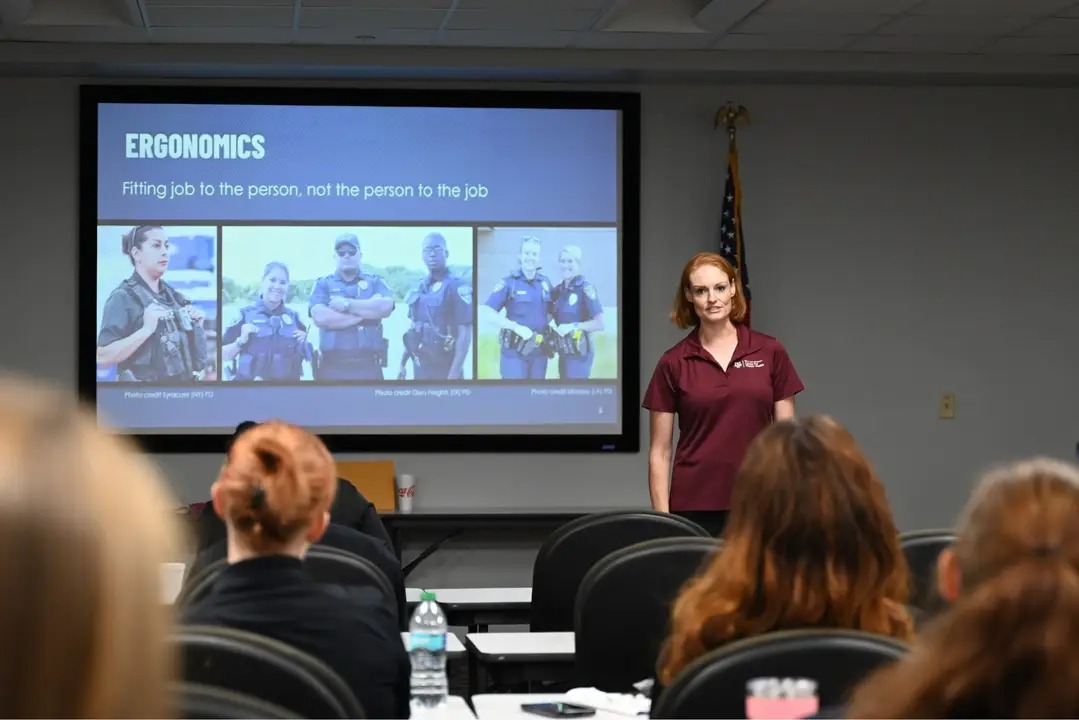First, thanks to the Louisiana State Police Women’s Conference for inviting me to speak; it was such a privilege! I went to the conference last year to recruit survey participants for my dissertation, and this year was able to report back what 979 women in 44 states taught us about armor ergonomics. The goal of any good researcher is to gain new, quality information and make some part of the world a better place. I want to do that for female armor wearers!

Kevlar®, Comfort, and the Future of Women’s Armor
Did you know a woman researcher developed Kevlar®? In 1965, DuPont chemist Stephanie Kwolek discovered that aromatic polyamide fibers formed long chains five times stronger than steel yet lighter than fiberglass. Her innovation led to the development of Kevlar®, now a cornerstone of ballistic armor. She was inducted into the National Inventors Hall of Fame in 1995—one of only four women at the time.
Earlier this month, I had the opportunity to speak with DuPont’s defense division about my research on armor ergonomics and their latest developments in material testing. What stood out most was this: women’s needs are being heard—and addressed—throughout the supply chain, starting with the materials themselves.
Beyond “Lighter is Better”
For decades, the body armor industry has focused on weight—lighter is better. But mobility, comfort, and fatigue in the armor deserve equal attention. The difference between a vest made with material weighing .75 pounds per square foot (psf) and .79 psf material is about the weight of a smart phone. For less than a pound, I’ll take the slightly heavier vest with better mobility and comfort properties any day! We need to start rethinking our judgement of armor materials to include more considerations.
Good news on that front. DuPont has developed a new Kevlar® called EXO™ that is designed with comfort in mind. EXO™ is significantly more flexible and can bend and crease without compromising protection—a major breakthrough for structured or contoured armor design.
If you read my last post on why materials are hindering armor innovation, you know material flexibility is key. Until now, we haven’t had the material technology to support better ergonomic designs for women. That’s changing.
Testing for Real-World Wear
DuPont is pioneering three new tests to evaluate how armor performs under real-world physical demands—moving beyond just ballistic resistance:
- Bendability Test: Uses a large curved press (think oversized Pringle chip press) to simulate how armor bends around a torso with torso flexion, like in an ab crunch position where the armor is bending around the body but also bent at the abs.
- Edge Pressure Test: Identifies pressure points around the neck and arms to reduce discomfort from stiff fabric edges.
- Energy Loss Testing: Measures the effort required to move in armor, giving insight into fatigue and cognitive burden.
These tests are a much-needed shift toward evaluating musculoskeletal and heat stress impacts—chronic issues faced by armor wearers daily. While no test is perfect, this is a strong starting point toward more functional, human-centered armor. Hopefully these tests will become industry standard so we can evaluate armor on more than just weight—that’s such a small piece of the big picture.
Thanks to Eoin Lynch and Benjamin Kennedy at DuPont for taking the time to discuss one of the latest tech advancements. I’m encouraged by the direction and look forward to seeing how these innovations shape the future of protective gear—especially for women.
For transparency: this post is not paid, sponsored, or endorsed by DuPont. These observations come from my own independent research and conversations. But if anyone from DuPont reads this, I’m looking for a job and know a little about armor.
